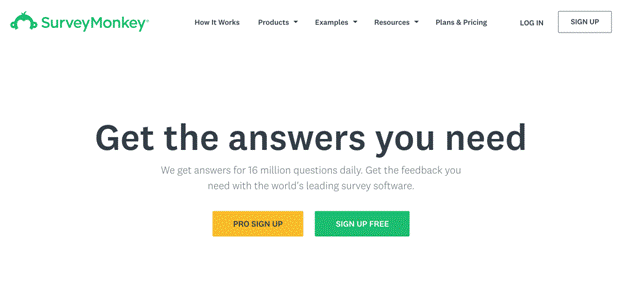A child’s first visit to the dentist is like a rite of passage. But it’s also a necessity.
The American Academy of Pediatric Dentistry (AAPD) recommends that a child go to the dentist by age 1 or within six months after the first tooth erupts.
But parents have even more reason to be concerned about the oral hygiene of their toothless babies.
A 2011 University of Illinois study confirms the presence of bacteria associated with early childhood caries (ECC) in infant saliva.
ECC is more commonly known as tooth decay or a cavity.
“By the time a child reaches kindergarten, 40 percent have dental cavities,” said Kelly Swanson, lead researcher and U of I professor of animal science. “In addition, populations who are of low socioeconomic status, who consume a diet high in sugar, and whose mothers have low education levels are 32 times more likely to have this disease.”
What this research makes clear is that the window of infectivity, which was once thought to occur between 19 and 33 months of age, really occurs at a much younger age.
This means it’s extremely important to minimize snacks and drinks with fermentable sugars from infants. Not to mention, parents and caretakers should regularly wipe the gums of babies without teeth, as suggested by the American Academy of Pediatric Dentistry.
Following these guidelines will greatly minimize a child’s tendency toward future cavities.
But early oral hygiene doesn’t just impact a child’s dental health. As you surely know, good oral hygiene can directly, and positively, impact overall health. And not, necessarily, how you may first assume.
Focusing on dental health can prevent childhood obesity
A 2017 thesis from Sahlgrenska Academy in Sweden suggests that dentists talking about dental health with both children and parents, particularly about what is healthy and unhealthy for teeth, can prevent a child from developing weight issues.
“Weight can be a sensitive subject, but if you talk about eating behaviors alongside dental health, you’re looking at the issue from a different angle,” confirms Louise Arvidsson, registered dietitian and PhD student at the Institute of Medicine.
We know that adults with depression feel better if, in addition to other treatment, they also meet with a dietitian.
So the question remains, can a healthy diet have the same effect on young children? Many researchers believe so.
All this to say that dentists play an incredible role in a child’s overall well-being, and from an earlier age than most parents realize.
How, then, can we help parents better understand how important a role dentists truly play?
Connecting with parents – marketing tips for dentists
Most folks know marketing to be a way for businesses to expand to a wider audience base. In other words, marketing = growth.
True. However, effective dental digital marketing can deliver key information to your existing patients, as well as to prospective ones.
In our case, our goal here is to inform parents about the importance of oral hygiene in children, as well as how good dental habits impact many factions of a child’s life. This, in turn, benefits your practice by:
- Providing valuable information to your patients, thus strengthening your trust with them
- Giving parents more reason to bring their children in to see you
How do we do this?
First, focus on your existing patients
We’ll discuss how to market to newer prospects in a moment. But first, let’s make sure you address your current patients, as keeping current patients requires far less of an investment than acquiring new ones.
To make this work you’ll need to know which of your patients have children, and which do not.
That’s not always easy to accomplish. But if you’re a smaller practice, it could be as straightforward as having conversations with your patients, and then adding that information into your database.
For example, during a dental cleaning, it’s not uncommon to hold conversations with patients. If you learn for example, that a patient has a 2-year-old son, you can update your databases to reflect that. This will then give you the segmented data you need to target your patients with personalized messaging.
But assuming this isn’t a fool-proof approach, or that you don’t want to rely on this type of strategy, you can automate the process a bit.
For this approach, you’ll need to have the email addresses of all your patients (which you’ll want anyway for the strategy we discuss in a moment). This information is vital toward sending out personalized emails to your patients.
Assuming you have their email addresses, your next step is to create an email blast to your entire contact list. For this purposes, we don’t recommend creating a heavily designed newsletter. Make it be a simple email from you to your patients.
Your goal is to segment your list so you know:
- Which of your patients have children
- How many they have
- How old these children are
To gather this information you’ll have to create a survey. Survey Monkey is a free and powerful tool that connects with a wide variety of mailing programs, such as MailChimp.

Here’s an example of an email you might want to send to all your patients:
Hey {First Name},
I was inspired to send this email to you today because of some data I’ve stumbled on over the last few weeks that I feel many of my patients would benefit from.
More specifically, I want to reach out to parents of young children. There are a lot of studies that I’ve come across that I know these parents want to know about.
But, rather than share it with everyone, I’m asking you to take a short, 3-question survey, to help me ensure that my emails go to people who actually want them.
It’ll take less than a minute, and I encourage all my patients to fill it out. Thanks in advance!
Here’s the survey >>
________________________________________
The survey itself could be three questions:
- Do you have children?
- How many do you have?
- What are their ages?
Depending on which services and apps you use, the responses could automatically transfer over to your mailing list (like MailChimp) and patient database.
Now, what do you do with that information?
Again, let’s revisit the concept of emails. All too often we see folks in the medical field shoot out a rather long newsletter once a month or quarter. This newsletter will encompass a ton of information about your practice. Discounts. Special offers based on the season.

And while there is, without question, value in a newsletter such as the one featured above, it is far more effective to connect with your audiences with more personal messaging.
Let’s take the data we acquired earlier. Based on either in-person conversations, an email blast or, best yet, a combination of both, we now know which of your patients have children.
And we know their ages.
Now, let’s assume that you’ve segmented these groups in your mailing system, like MailChimp.
In MailChimp, for example, you could have a list called: PATIENTS.
Then, within that list, you could have a number of subgroups. One could be Parents. Or, you could get even more granular: Parents of Toddlers for one group and Parents of Teens for another, and so on. Whenever possible, it’s best to segment lists into as many subgroups as possible. This allows for more personalization in your content.
So now, let’s assume you have a healthy list of patients in your Parents of Toddlers subgroup. Rather than send them a generic newsletter that you send to everyone else, wouldn’t it be more effective to send them a newsletter that discusses, specifically, concerns that matter most to them?
Highlighting the 2011 University of Illinois study we referenced above would certainly catch their eye. It might even give them enough cause to schedule an appointment with you.
Then, let’s say you shoot out an email/newsletter to parents of young children (around ages 5-10). It could say something like:
“How often do you talk to your child about their dental hygiene? That conversation could help prevent childhood obesity. See what we mean now.”
And then these parents would be taken to a page/post on your site you created specific to them. On that page it discusses the study we referenced earlier. And then, as all good pages and posts should have, it’ll feature a relevant call to action (such as to schedule an appointment with you).
And that’s the power of personalized messaging.
But you don’t have to solely rely on email marketing. Emails are known to find their way to the spam folder; not to mention many people simply don’t open, or fully read, emails.
That’s why we always recommend our healthcare clients to incorporate paid marketing strategies like PPC into their mix. Specifically, for your needs, we’d recommend using paid campaigns on Facebook. That’s because, with your patient info saved in your database, you can actually target ads to the exact people you want to reach (like, for example, Parents of toddlers in your database).
We go into incredible detail on how to create solid Facebook strategies in our article: “The Definitive Guide to Facebook Custom Audience Targeting.” Check it out ->
Once you read that article, you’ll know how to implement Facebook ads to target certain audience segments, including to people who aren’t currently your patients.
This will give you the ability to create ads that speak to the pain points and concerns of your patients.
You can create ads built around the same content you created your emails and newsletters around.
So, for example, let’s say you created a post or page on your site about the link between good dental hygiene and preventing childhood obesity.
Great.
Now, you can send targeted traffic to that page a number of ways, including:
- Personalized email messaging based on your segmentation of your patients
- Targeted ads on Facebook
- Targeted PPC ads
We haven’t discussed PPC ads yet. PPC ads can be complex and deserve the attention of an expert. That’s because, when developing PPC ads (think Google AdWords) you want to factor in a host of components, including:
- Developing keywords and negative keywords
- Optimizing your bidding strategy
- Monitoring performance to increase ROI
But the tenets of PPC are pretty standard. You create an ad. You target that ad to a specific group. When that group clicks on your ad, they’re taken to a landing page that continues the conversation that began from that ad.
The childhood obesity content we mention above can be that landing page.
The truth is, paid search advertising deserves its own article. There’s just so much to cover. But you can get an overview of our approach here ->
Follow a straightforward formula to reach and educate your patients
Whether you use emails, social media, paid media or all of the above, you can follow a basic formula to see a return on your investment.
First, create content that your audiences want. Turn complicated research studies into simplified articles and infographics that you know your patients and prospects would benefit from.
Then, find ways to target your audiences. Segment your existing patients into subgroups in your database based on demographics, age of their children and more.
Remember, you can never have too many subgroups and categories, and your patients can and likely will belong to several groups. As far as new prospects, turn to our Facebook Custom Audience guide for tips. When it comes to PPC, give us a call for a consultation.
Lastly, connect your target audience with all that content you shared. Use a combination of emails (newsletters), healthcare social media strategies and paid advertising to see the best results.
In the end, you’ll provide a valuable service to your patients and prospects, while also cementing yourself as a trusted source in your community.
And that’s the exact strategy you need for long-term and continued success.

